Film music, a universal language that transcends geographical boundaries, has the remarkable ability to weave intricate cultural narratives and evoke emotions across diverse audiences. From the soul-stirring melodies of Bollywood to the iconic symphonies of Hollywood, the influence of music in films extends far beyond the silver screen. In this article, we will delve into the captivating world of global harmonies and explore the influence of music in films bridges cultural divides, leaving an indelible mark on society.
The Cultural Significance And Influence of Music
Film music, like a mirror, reflects the cultural tapestry of the societies it represents. It captures the essence of a time and place, conveying the emotions, values, and traditions of a particular culture. For instance, the hauntingly beautiful score of “Schindler’s List” composed by John Williams vividly portrays the anguish of Holocaust survivors, serving as a poignant reminder of a dark period in history.
Cinematic Traditions Around the World
Each region of the world boasts its own cinematic style, complete with unique musical elements that define its identity. Hollywood, with its grand orchestral compositions, has set the gold standard for the influence of music in film. Film music traditions around the world offer unique insights into the cultural tapestry of each country.
1. The Hollywood Magic
Hollywood is renowned for its cinematic magic, and film music is no exception. Explore how Hollywood has shaped the global perception of film music and the iconic composers who have left an indelible mark on the industry.
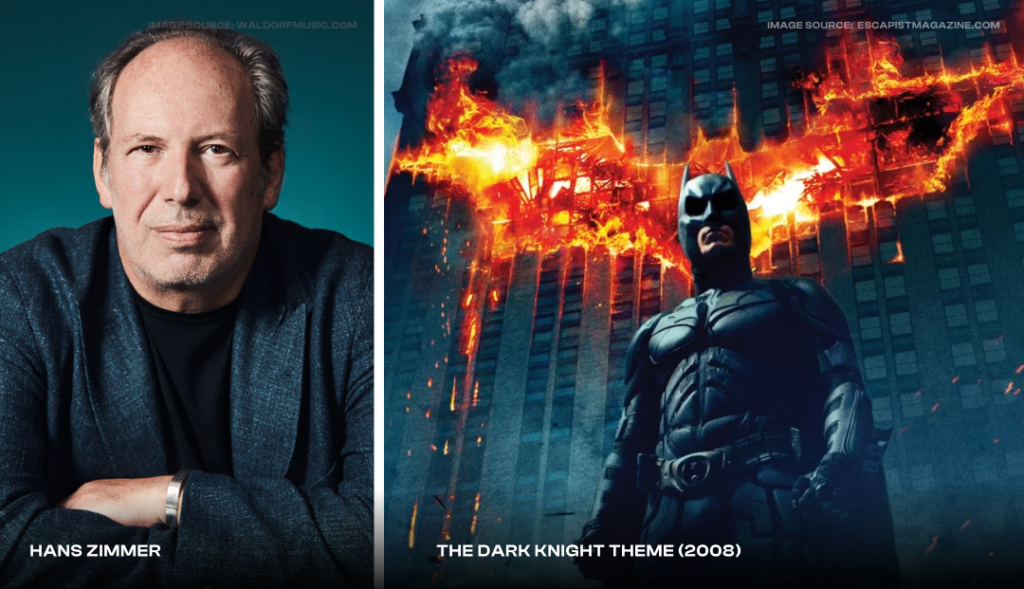
The Dark Knight (2008) – Composer: Hans Zimmer
Hans Zimmer‘s dark and menacing score for “The Dark Knight” perfectly complements the intensity and complexity of Christopher Nolan’s Batman trilogy. The music, particularly the iconic theme associated with the Joker, adds a palpable sense of tension and drama to the film, contributing significantly to its overall impact. Hans Zimmer’s work on “The Dark Knight” is often regarded as one of the most memorable and influential film scores in Hollywood history.
2. Indian Cinema: Bollywood’s Musical Extravaganza
Bollywood, the Indian film industry, is famous for its vibrant and larger-than-life song-and-dance sequences. What many may not know is that Bollywood produces a staggering number of songs annually, with some movies featuring over a dozen musical numbers. The influence of music in Bollywood films, with its catchy tunes and intricate choreography, is integral to Indian cinema’s identity and global appeal.
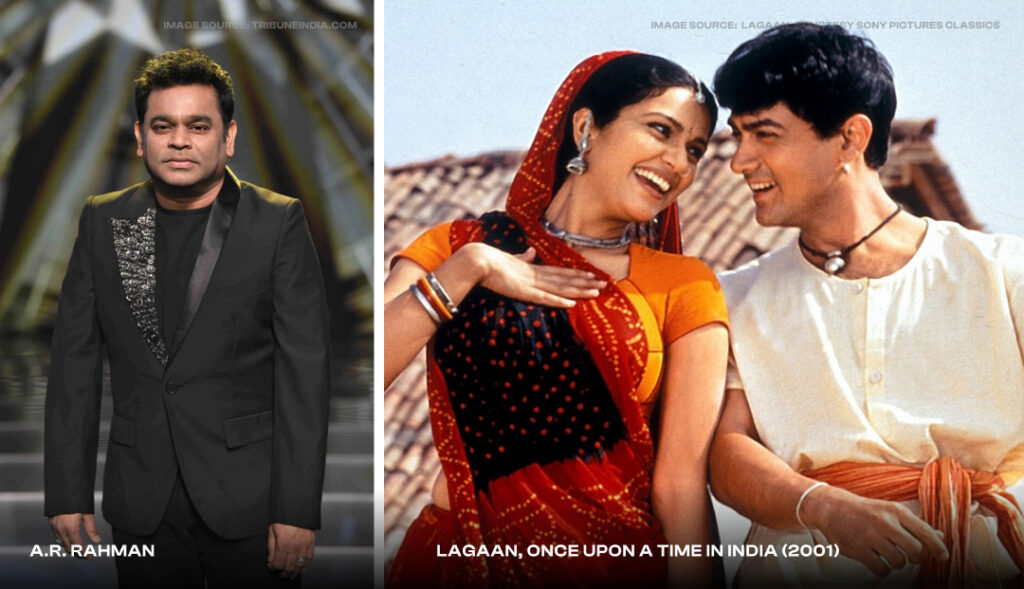
Lagaan: Once Upon a Time in India (2001) – Composer: A.R. Rahman
- A.R. Rahman’s music for “Lagaan” is a masterpiece of Bollywood music. The film features a mix of traditional Indian melodies, folk tunes, and contemporary elements, creating a rich and vibrant musical tapestry. The songs, including “Mitwa,” “Radha Kaise Na Jale,” and “Ghanan Ghanan,” are not only melodious but also integral to the film’s storytelling. “Lagaan” and its music garnered international acclaim and played a significant role in introducing Bollywood music to a global audience.
3. Italian Neorealism: A Pioneering Influence
Italian Neorealism, a film movement that emerged after World War II, significantly influenced the use of music in cinema. This movement prioritised realism and authenticity in storytelling. Instead of relying on orchestral compositions, Italian Neorealist films often incorporated folk songs and natural sounds to create an unfiltered, documentary-like experience for viewers. This approach had a lasting impact on world cinema.
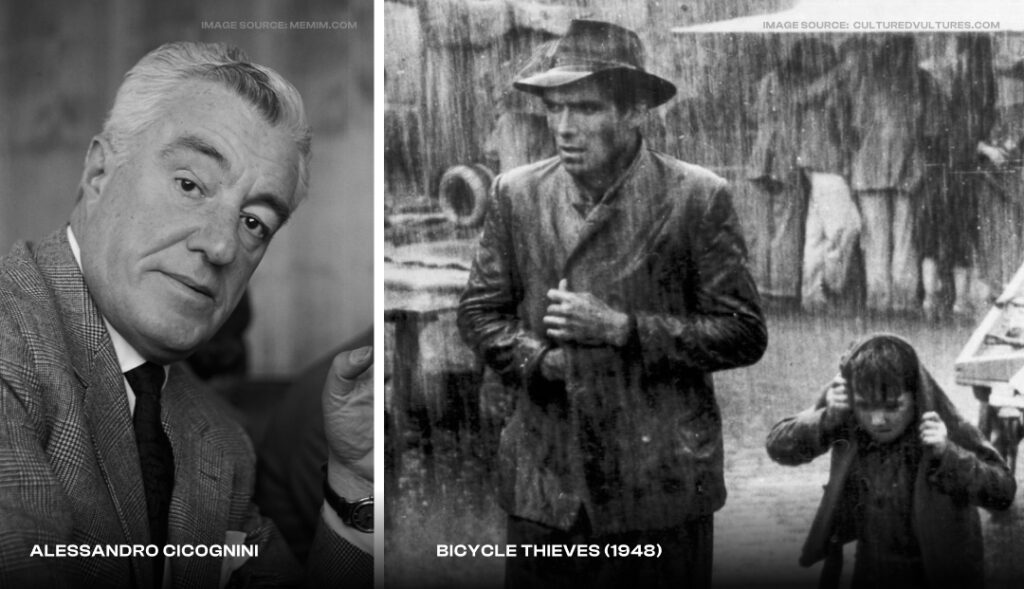
Bicycle Thieves (1948) – Composer: Alessandro Cicognini
This iconic film directed by Vittorio De Sica is a hallmark of Italian Neorealism. The music by Alessandro Cicognini is minimalistic, using simple melodies and folk-like tunes to complement the film’s realistic and poignant narrative. The score captures the essence of post-war Italy and the struggles of the working class. “Bicycle Thieves” is celebrated not only for its storytelling but also for its use of music to evoke genuine emotions and portray the human condition during that period.
4. French New Wave: Breaking Musical Conventions
The French New Wave, another influential film movement, challenged traditional approaches to the influence of music in film. Filmmakers like Jean-Luc Godard and François Truffaut rejected conventional scoring and opted for more experimental soundtracks. This movement introduced a new way of using music in cinema, emphasizing its emotional and thematic significance rather than adhering to classical compositions.
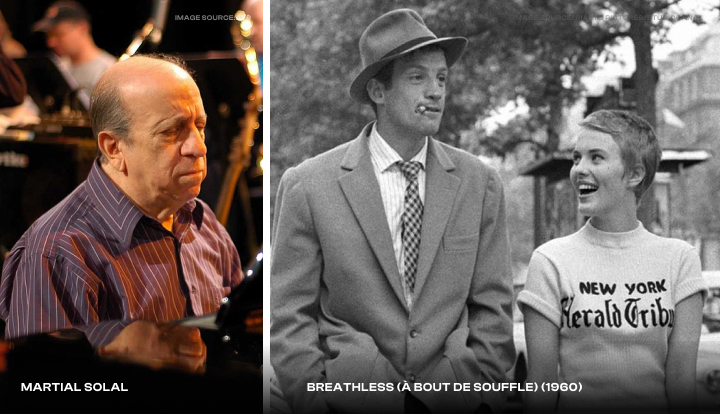
Breathless (À bout de souffle) (1960) – Composer: Martial Solal
Directed by Jean-Luc Godard, “Breathless” is a quintessential film of the French New Wave movement. The music for the film, composed by Martial Solal, is as unconventional as the film itself. Solal’s jazz-infused score reflects the spirit of youthful rebellion and spontaneity that defines the French New Wave. The use of jazz music in “Breathless” was groundbreaking at the time and contributed to the film’s innovative approach to storytelling and filmmaking.
5. Japanese Cinema: The Art of Silence
Japanese cinema, renowned for its subtlety and precision, often places a strong emphasis on silence as a powerful narrative tool. Japanese directors and composers use moments of quiet to create tension, contemplation, and emotional depth in films. This tradition highlights the art of restraint in film music, allowing the absence of sound to speak volumes.
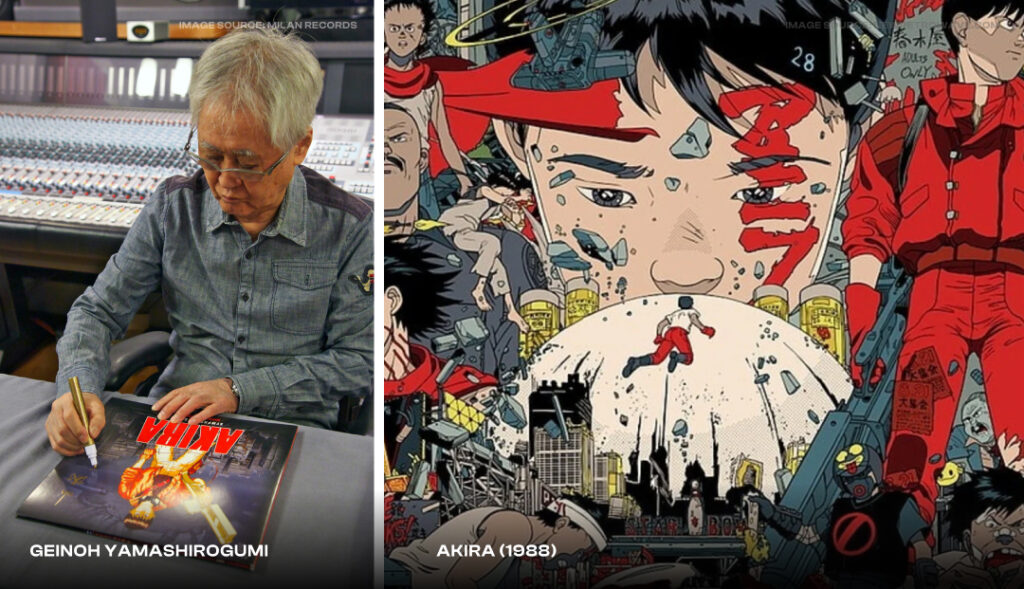
Akira (1988) – Composer: Geinoh Yamashirogumi
The anime film “Akira” directed by Katsuhiro Otomo features a striking example of the use of silence in Japanese cinema. The film’s score, composed by Geinoh Yamashirogumi, combines traditional Japanese instruments with electronic elements. However, what sets it apart is the deliberate use of silence in key moments to amplify the film’s intense and dystopian atmosphere. The contrast between moments of explosive sound and profound silence adds to the overall impact of the film.
6. Latin American Rhythms: Salsa, Samba, and More
Latin American cinema celebrates the rich tapestry of the influence of music in the region, with films often featuring lively and rhythmic scores inspired by salsa, samba, tango, and other traditional genres. These infectious melodies and danceable rhythms not only enhance storytelling but also showcase the vibrant musical cultures of Latin America.
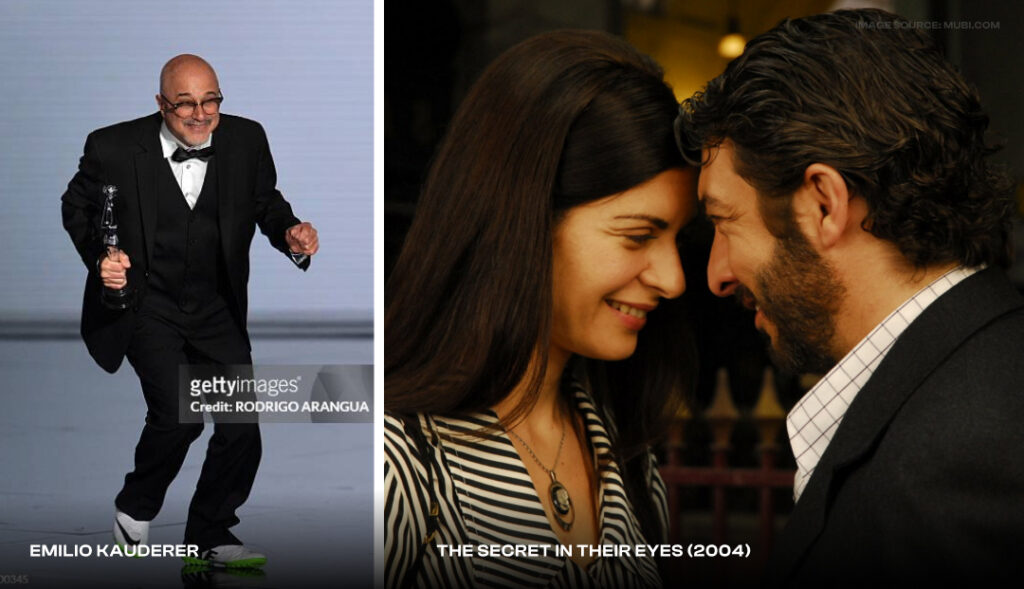
The Secret in Their Eyes (2009) – Composer: Emilio Kauderer
“The Secret in Their Eyes” (El secreto de sus ojos), directed by Juan José Campanella, is an Argentine crime drama film that weaves together a tale of murder, love, and obsession. The film’s haunting and evocative score, composed by Emilio Kauderer, draws inspiration from Argentine tango and traditional Latin American music. Kauderer’s music adds depth to the film’s emotional landscape, enhancing the tension and passion of the story.
7. African Beats: A Musical Journey
African cinema draws from the continent’s diverse musical heritage. From the hypnotic rhythms of West African drumming to the melodic sounds of traditional instruments, African films incorporate a wide range of musical elements. This tradition reflects the continent’s cultural diversity and deep connection to music as a storytelling medium.
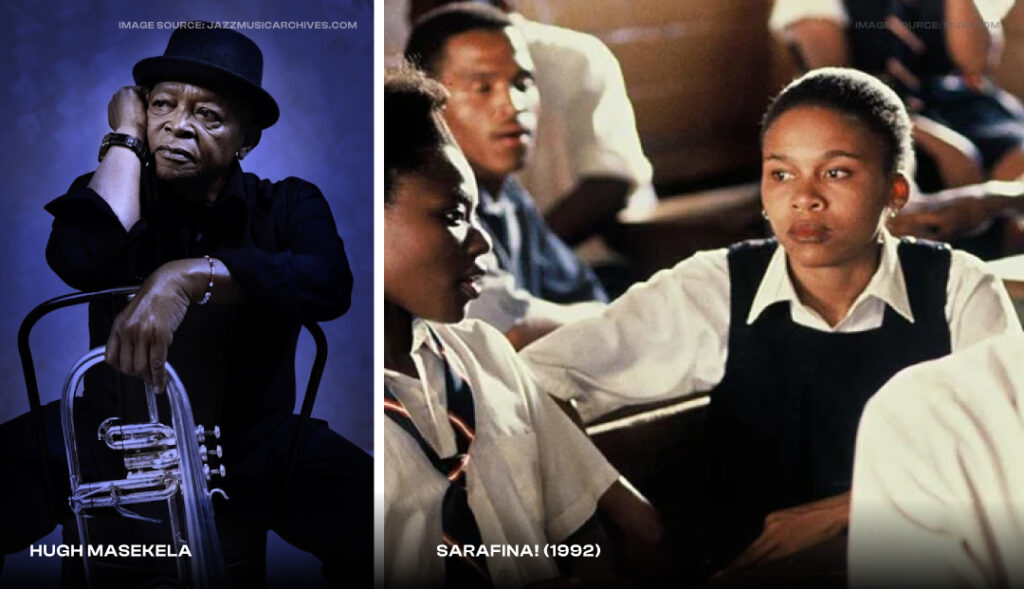
Sarafina! (1992) – Composer: Hugh Masekela
Is a South African musical drama film directed by Darrell Roodt, set during the apartheid era. The film’s score was composed by the renowned South African musician and composer Hugh Masekela. Masekela’s music, deeply rooted in African jazz and traditional South African sounds, plays a central role in the film’s narrative. His evocative compositions capture the spirit of resistance and resilience of the characters as they navigate the challenges of apartheid. “Sarafina!” not only features remarkable music but also serves as a powerful commentary on the political and social struggles of the time.
8. Korean Wave: K-Pop and Film Synergy
Korean cinema has gained international acclaim, partly due to its synergy with K-Pop music. Discover how Korean film music has contributed to the global popularity of K-Pop.

Train to Busan (2016) – Composer: Jang Beom-june
Directed by Yeon Sang-ho, “Train to Busan” is a highly praised South Korean zombie thriller film. While the film primarily features a haunting and suspenseful score by Jang Young-gyu and Lee Seung-hoon, it also uses K-Pop music to create contrast and tension. In one memorable scene, the upbeat K-Pop song “Aloha ‘Oe” by Jang Beom-june plays on the train’s PA system, adding an eerie and ironic juxtaposition to the intense zombie outbreak happening on screen. This creative use of K-Pop music enhances the film’s impact and showcases the versatility of Korean cinema in integrating various music genres.
Cross-Cultural Collaborations
In today’s interconnected world, the influence of music in film is amplified as musicians and composers frequently collaborate across borders, leading to the fusion of diverse musical styles in cinema. This cross-pollination of cultures results in captivating soundtracks that resonate with global audiences.
Here are some most famous examples of cross-cultural collaborations in film music:
- “Slumdog Millionaire” (2008) – A.R. Rahman, an acclaimed Indian composer, worked with British director Danny Boyle to create the soundtrack for this film. The blend of Indian classical music with contemporary Western elements resulted in a globally acclaimed and award-winning score.
- “The Last Samurai” (2003) – Hans Zimmer, a German composer, joined forces with Japanese musician and composer, Kodo, to craft the evocative soundtrack for this epic film. The collaboration beautifully captured the essence of Japanese culture.
- “Crouching Tiger, Hidden Dragon” (2000) – Chinese composer Tan Dun collaborated with cellist Yo-Yo Ma and other Western musicians to create a mesmerising score for this martial arts masterpiece. The fusion of traditional Chinese instruments with Western orchestration added depth to the film’s emotional impact.
- “The Lion King” (1994) – The renowned British pop icon Elton John and British lyricist Tim Rice joined forces with South African composer Lebo M and collaborated with composer Hans Zimmer to craft the unforgettable music for Disney’s timeless classic, ‘The Lion King.’ The infusion of African-inspired melodies introduced a distinctive and captivating flavour to the film’s soundtrack, leaving an indelible mark on audiences worldwide.
- “Lagaan: Once Upon a Time in India” (2001) – Composer A.R. Rahman and British director Ashutosh Gowariker collaborated to produce a soundtrack that seamlessly blended Indian folk music with Western orchestration, enhancing the film’s depiction of colonial-era India.
These collaborations not only enriched the films’ soundtracks but also contributed to their critical and commercial success, demonstrating the influence of music in film and the power of cross-cultural musical partnerships in the world of cinema.
In conclusion, the influence of music in film is a powerful force that transcends cultural boundaries, uniting people through its universal language. It reflects the rich tapestry of human experiences and has the potential to foster empathy and understanding on a global scale. As we celebrate the harmonious interplay of music and cinema, let us remain open to the boundless possibilities that lie ahead.
FAQ: The Influence of Music in Film
1. How does the influence of music in film help bridge cultural divides?
The influence of music in film transcends language and geographical barriers, allowing audiences from diverse backgrounds to connect emotionally with the story. By incorporating elements from different musical traditions, films can resonate with viewers globally, fostering a sense of shared experience and understanding across cultures.
2. What are some examples of films where the influence of music played a crucial role in uniting cultures?
Films like Slumdog Millionaire, The Lion King, and Crouching Tiger, Hidden Dragon are prime examples where the influence of music was pivotal. These movies utilized cross-cultural collaborations in their soundtracks, blending different musical styles to create a universal appeal that resonated with audiences worldwide.
3. How do cross-cultural collaborations in film music enhance the viewer’s experience?
Cross-cultural collaborations in film music introduce audiences to new sounds and rhythms, enriching the cinematic experience. These collaborations not only add depth and authenticity to the film’s narrative but also broaden the viewer’s exposure to different musical traditions, making the film more relatable and impactful on a global scale.

